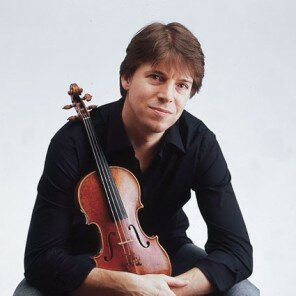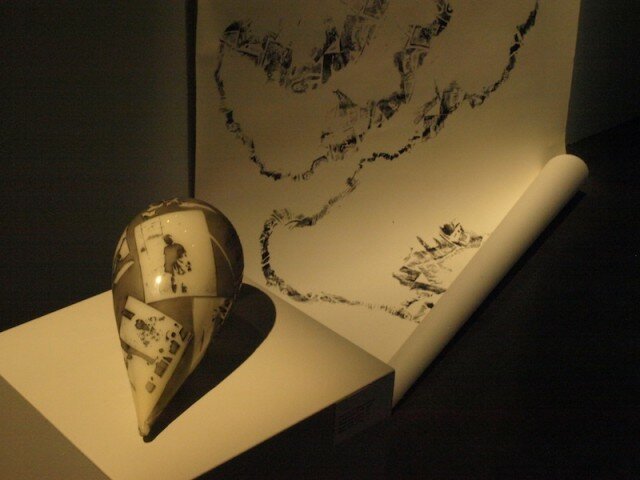
As another year’s Bumbershoot Festival winds down, take a moment to contemplate the Spacerail that Photocoyote found but you may have missed…

As another year’s Bumbershoot Festival winds down, take a moment to contemplate the Spacerail that Photocoyote found but you may have missed…
Alas, the sunny days of summer are winding down. However, as fall approaches, classical music ensembles around the city are gearing up for a new season of performances. This month, both the Seattle Symphony and Town Hall begin their 2012-13 concert seasons with spectacular opening night programs. Also on the calendar this September is the 100th anniversary of John Cage’s birth. Performances celebrating the famed composer’s life are scheduled around the country, with Seattle being no exception.

The weather may be cooling off, but things are just starting to warm up in concert halls around the city…
Sep. 7 – 9 — John Cage, anyone? Innovative vocal ensemble The Esoterics celebrates the composer’s 100th birthday with three evenings of concerts. They’ll be performing 42 of the 92 works in Cage’s Songbook, as well as three of his “Number Pieces“: Four2, Four6, and Five. This ambitious series of performances has plenty to offer for Cage fans and newbies alike.
Sep. 11 — Town Hall kicks off its 2012-13 TownMusic series with an evening of piano trios. Cellist Joshua Roman, who serves as music director of TownMusic, will be joined onstage by Vancouver-based violinist Dale Barltrop and pianist Victor Santiago Asuncion. The program will be a mix of old and new, featuring beloved works by Beethoven and Schubert alongside a piece by up-and-coming composer Dan Visconti.
Sep. 15 — The Seattle Symphony begins the 2012-13 concert season with a festive evening of American music. This year’s Opening Night Concert & Gala features superstar violinist Joshua Bell performing Bernstein’s Serenade. Also on the program is Copland’s inspiring Lincoln Portrait, which will be narrated by former Washington State Governor Daniel J. Evans.
Oct. 1 — Author Paul Elie visits Town Hall to discuss his book Reinventing Bach. His multimedia presentation, which includes clips of performances by Glenn Gould, Pablo Casals, and Yo-Yo Ma, will explore how contemporary artists and musicians keep J.S. Bach’s music fresh and relevant in today’s world.
While Seattleites tend to think of Bumbershoot as a great music festival, about half the events on the schedule are non-musical in nature, including comedy, symposia, theatre, film, visual arts, and items less easy to classify. This year, the visual arts were as good a reason as any to get to Bumbershoot, while the theatre provided well-timed respite from standing in the sun.
Highlights of the visual art included the exhibition of atmospheric urban landscapes by the late Christopher Martin Hoff. Vast wastelands of highway, dereliction, and construction alternately assume hard clarity and hazy intangibility on his canvas. Precise lines of color leap out of the beige in pieces such as the Floating Worlds series, while features fade into a blurry taupe in others such as the Infrastructure paintings. Altogether they feel cold, empty, and foreboding. A series on Ground Zero construction captures the sacred attention in the context of emotionless reconstruction.
In the memorial project of this exhibit, a few unfinished pieces stood out, including depictions of the demolition of the Viaduct and the Elwha Dam. These gave a sense of Hoff’s body of work as a sound suddenly cut off–even while the music from the Tune-in Stage filtered in through the open garage doors. With so many pieces focused on memorial, the context of Hoff’s sudden death took prominence in the hushed conversations of viewers. The one downside to the exhibit was that too much was crammed into the space, making some pieces and their explanatory notes impossible to view without endangering other pieces.
An adjacent exhibit focused on studio glass. Here two of the most striking displays were by Edison Osorio Zapata. These featured blown glass objects etched and used as printing surfaces, displayed next to sheets of heavy paper covered in their prints. “Gringo Graffiti” has a conventional-looking roller with a glass cylinder, metal handle, and an all-over print, like wallpaper, while “Lagrimas de Marfil” features a teardrop-shaped roller. This “ivory tear” is covered in etchings which print onto its accompanying paper in a pattern that appears random and organic, sometimes narrow, other times wide, always meandering.

The accompanying description noted the artist’ss interest in investigating the fractured and prismatic nature of communication across cultures, especially in the context of the immigrant experience. The medium seems a natural fit for such investigations, and Zapata heightens this quality by the pursuit of traditionally simple, straight-forward forms such as printing. Displaying both object and print highlights the distance source and expression.
The crowd favorite of the visual arts–outside of Flatstock, the rock music poster exhibition on the main floor of the Armory–was an exhibit linked to the Next Fifty celebrations in which artists tied their work to the same spirit of skyward futurism as the 1962 World’s Fair. Along with some interactive light and sound installations there were a couple of witty pieces that inspired the wonder created by that event. Most prominent among these were the silver animal automata of Cathy McCarthy, which unceasingly performed their little actions under plexiglass domes on cardboard mushroom pedestals that felt perfectly Jetsons.
As for theatre, the overall impression is that Bumbershoot did a fine job connecting events to audience. For the several young families at Seattle Center in the early afternoon of Saturday ACT’s youth theatre presentation of an abridged version of the theatre’s upcoming Ramayana (October 12-November 11) was a good fit. The instructors of this group have done an excellent job teaching mask technique and the basics of traditional dance. One hopes they’ll give more attention to the puppetry side of the production before they get to their official presentation, as its inclusion felt perfunctory in this performance. Nonetheless, this is clearly an excellent opportunity for these students and their families.
Wing-It Productions’ Election Show offered another preview of a soon-to-open run (September 6-November 2). A packed house watched comics enact a long-form improvisation that clothed the form in the tropes of the election season. Audience participation was managed with extraordinary care and a bit of humor. The cast also took pains to create a mostly de-politicized environment of Whigs versus the Bull Moose Party. The variations of theme and structure often came off as no more than repetitious, and there was nothing revelatory about this piece. People who like improv will enjoy this show; those who do not will find no reason to change their opinions.
As the crowd turned decidedly more adult and The Heavy brought a sustainable groove to Saturday’s anemic music offerings, the Washington Ensemble Theatre staged a brief revival of their summer offering, Bed Snake, to a packed house with some diversity of age and race.
Whether that diversity remained after the mid-show exodus–Hannah Victoria Franklin, as Kry$tal, led the actors in their triumphant response to this–one cannot say. A hip-hop Faust with a romantic twist, Bed Snake has greater ambitions than achievements, and these achievements were all the more muted, given the Center House Theatre’s abysmal sight lines. Still, the dancers did great work with a limited vocabulary, the acting was committed, and the projections were excellent (for those who could see them).
While it makes sense to stage this pop music-immersed show at Bumbershoot, the production suffers in comparison. The original rhymes in the piece are to hip-hop as Frank Wildhorne is to pop-rock: one can see that there’s a relationship, but in both form and, especially, quality there is a vast difference. Still, one hopes there will be more in this vein that crosses boundaries of form—more new theatre that takes its cue from the culture and vibe of Bumbershoot.
Opening this weekend, For A Good Time, Call… details the misadventures and eventual mutual redemption of two Manhattan sophisticates (Ari Graynor and Lauren Miller) who stumble into a phone sex dynasty. The film’s director Jamie Travis and co-author Katie Anne Naylon sat down in Seattle a few weeks ago to take our questions.
The SunBreak: So, exactly how much is the film based on those ads you always see in the back of the Village Voice?
Katie Anne Naylon: To every extent, it was based on that! The phone sex part, came from an experience I had in college wherein I applied to one of those [kinds of] of ads, because I needed a part-time job as a freshman, and I didn’t want to leave campus because parking was really difficult. Freshmen were not supposed to bring a car!
TSB: Which college was that?
Katie Anne: Florida State, and I’m sure they’re happy and excited to hear about this film… (laughs)
Jamie Travis: This is great promotion for FSU!
Katie Anne: Technically, you can’t run a business from your dorm room, but I did. I started my own phone sex hotline, and I cut out the middleman because they were paying me, I think it was a quarter a minute, and these guys [her customers] were paying three bucks a minute. So I started my own line, with a friend of mine, and therein lies the inspiration.
TSB: How extreme do these guys get? I know one former phone sex operator who I’m pretty sure has PTSD…
Katie Anne: It was very extreme. No one has asked that, so it’s good you’re asking that. This is wonderful.
Jamie: It’s hard-hitting journalism! (laughs)
Katie Anne: It really is! Because I was a virgin at the time. I was eighteen and I hadn’t even had sex, and so I thought I would be pretending I was in a hot tub that I wasn’t really in, and it wasn’t like that at all. I thought sex was like what I saw in Pretty Woman or WhenHarry Met Sally. That was my idea of sex. But it was very extreme and off-putting. It took me a few years to really get out there and explore. (laughs), and have sex, finally. I felt like the last virgin standing. I was twenty-three.
If you’re calling a phone sex line, the things that you’re interested in would probably petrify any normal girlfriend. And/or you’re very lonely and just want to chat!
TSB: Were there some of those?
Katie Anne: Totally, people who called who were just talking. My whole gag was that I wouldn’t talk about sex until they brought it up, and even then I would be like, “What, I don’t know what you mean…” (laughs) Because you want to keep them on the phone as long as possible. We would just talk about the weather in Indiana, what it’s like to drive an eighteen-wheeler…
TSB: Were there a lot of them from Indiana? A lot of truck drivers?
Katie Anne: Truck drivers were common, and a lot of traveling businessmen. Guys calling from work…
TSB: One wonders if the truckers were dialing while trucking…
Katie Anne: This was before the hands-free set, so I hope not.
Jamie: Tell him about the guy who would try to get off while you were taking his banking information.
Katie Anne: We did not have a 900 number, what we had was an 800 number and we billed by credit card. So this was the beginning of PayPal, because eBay was shooting up right at that time. So we were using PayPal with a very limited fee, and that was really our only overhead. Our dorm room was covered (laughs), and the 800 number, you’re only paying ten cents a minute, covering their long distance, so we had a ten-minute minimum, when you called we’d bill your card thirty dollars to make sure the card was valid. Every time we answered the phone, so long as we got you through the billing process, we got thirty bucks, which is great.
TSB: But some guys like to explode on take-off…
Katie Anne: Yeah, exactly! Or they didn’t have credit card numbers, they were just jerking around. (laughs)
Jamie: They just wanted to hear the voice of a lady!
Katie Anne: Yeah, they’d be like “1234 5678,” and I’m like, “That’s not a Mastercard number, sir!”
TSB: Is it possible that a man calls and thinks to himself, “Okay, I’ve got about a forty-five-second window before she gives up on me, but if I’m primed and ready to go, maybe I can take it over the threshold…”
Jamie: That man is desperate and cheap! (laughs)
Katie: No, cheap and tawdry. (laughs) We had a website with cheesy girls on it, who were not us, and I imagine that they were masturbating, getting really excited, and when they were close to climax they would call the number, hear our voices, and finish, and they’d get a freebie. I think we were just unknowingly closing the deal. But some of the other people, like I said we had that ten-minute minimum, and five minutes in their wife would walk in, and bam, they’d hang up, you’d get five minutes free. So it works out both ways.
TSB: Is this the first film for both of you?
Jamie This is my first feature film. I’ve made short films in Canada for the last ten years.
TSB: And how did you two meet?
Katie Anne: I found Jamie in the New York Times, there was a profile on him…
Jamie: It wasn’t a phone sex ad!
Katie Anne: …someone had sent me the link to it, I can’t take full credit, but I watched his films after that and really responded to them. I personally didn’t respect the short-film genre, I was like, “Why don’t you try harder? Get a better crew, someone will invest in you!” (both laugh) And also they always seemed very thinky, they were trying to teach you something, or they were so genuinely ambiguous.
When I watched Jamie’s shorts, the art design, production design, it just blew me away how they looked and felt. I’m a Wes Anderson fan, and I didn’t know that things could be even more beautiful and yet still have story. And Jamie had a dark sense of humor that came through. I was so proud of him, not knowing him. I called him up and we met over the phone, and Skype…
Jamie: It all happened through our agents, we didn’t have direct contact for a little while.
Katie Anne: And then we all got along, the leads as well…
Jamie: …and I had been reading scripts for at least five years, I’ve written everything else I’ve directed, and I was on the fence as to whether I would direct somebody else’s script. This was the first script in five years of having Hollywood representation, that I really responded to a script, really felt like it was doing something fresh, and it felt different enough from my body of work, and yet close enough, to make it interesting for me.
TSB: What else attracted you about the script?
Jamie: Honestly, the most important thing for me when I first read a script, or engage with anything in this world, is that it holds my interest. That it feels smart and fresh and interesting. I didn’t, for once, put a bookmark in at page twenty and come back to it an hour later. I read it from beginning to end, which I never do because I have a very short attention span, and then I read it again and I really had an emotional response. I laughed a lot, and I got almost teary at one point, and I…
Katie Anne: You told us you wept!
Jamie: I nearly wept. Maybe because I was so happy I finally read something that really loved, and really felt I was the right person for.
Also, I loved how female-driven it was. I’m a big fan of movies from the ‘80s and the ‘90s that feature two strong women as protagonists, and you never see that anymore.
TSB: Which are your favorites?
Jamie: Outrageous Fortune is a near-perfect movie to me The combination of Bette Midler and Shelley Long is something so important to my childhood, and probably the first time in my life that I truly became obsessed with film. I’ve seen Hello Again and Outrageous Fortune and Big Business many, many times, all in my childhood. In the ‘90s there were all these female dramas, like The Hand That Rocks The Cradle and Single White Female, and suddenly the number of really female stories out there became less. Then Bridesmaids, of course, made such a different for the universe of comedy. Katie can tell you about it, but Bridesmaids really paved the way for getting people interested in this film.
Katie Anne: The studio system, they try to make a business out of an art form. I think there had been some female-driven comedies that bombed, that didn’t quite work, so those were tabled and the bromances came out, and they really will just chuck a bunch of rom-coms at women, and women will go see them no matter what, because we need something to do on Friday night too. And there’s a great audience of women that go see movies. I love a good romantic comedy sometimes, but there’s a machine making them. And where is Working Girl, where is Beaches? When our script went out, all over Hollywood, people responded to it, “We love it, we could never make it, what else are you writing?”
Finally we said, let’s just take a chance on ourselves and roll the dice and see if we can’t do this. Then Bridesmaids came out gangbusters, broke open a chasm for female-driven comedies and a lot of female writers. There’s just a whole road that’s been paved, which is really great for women.